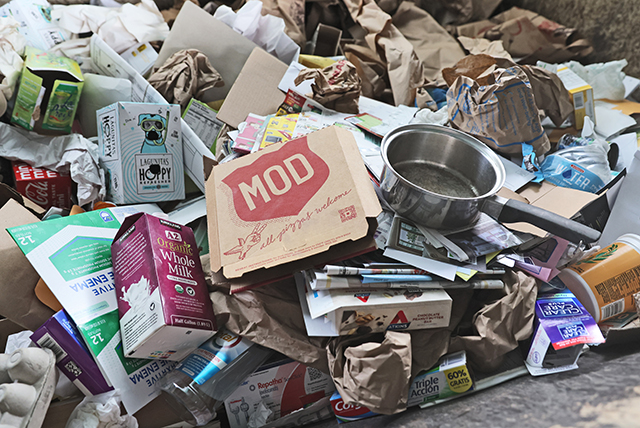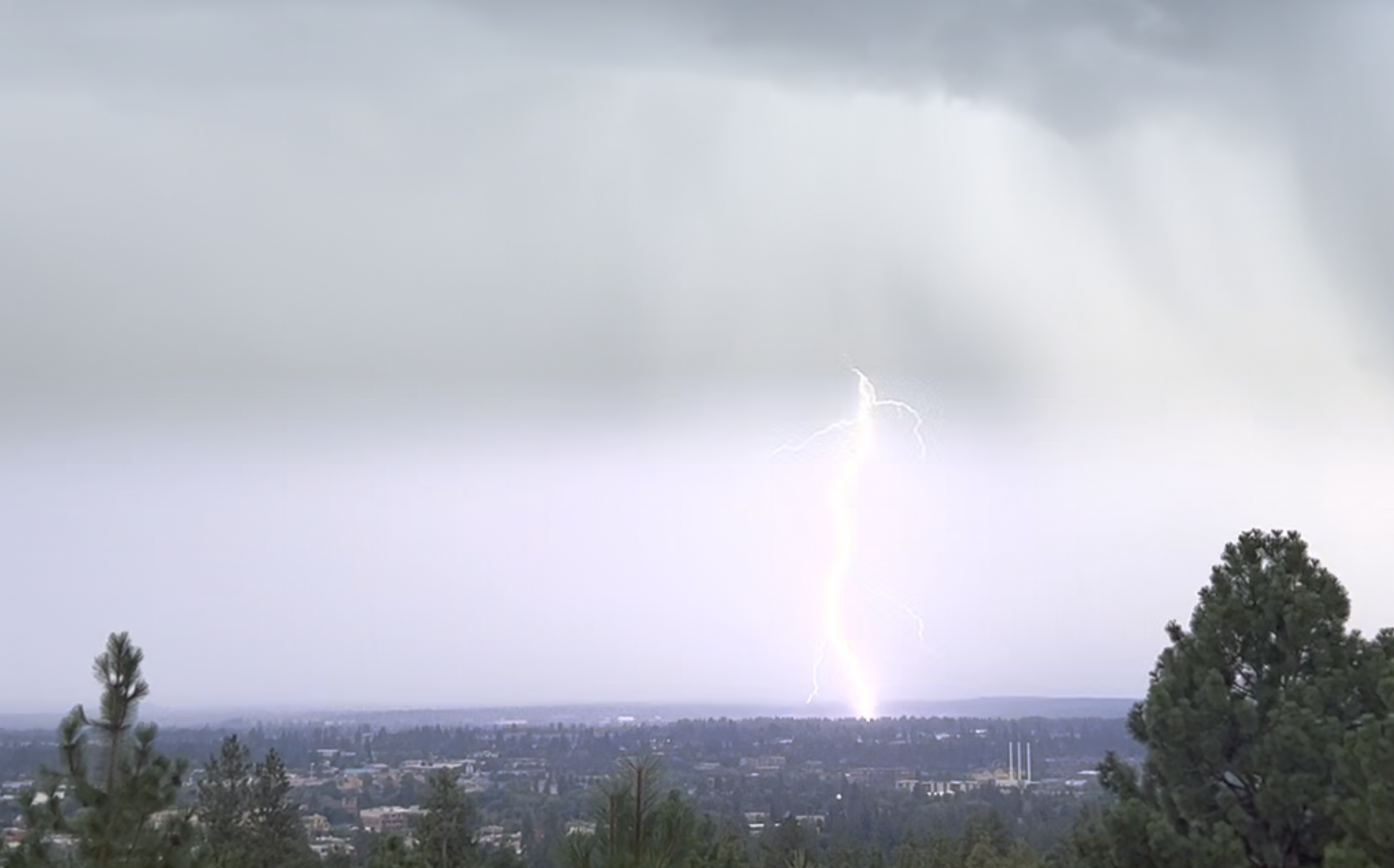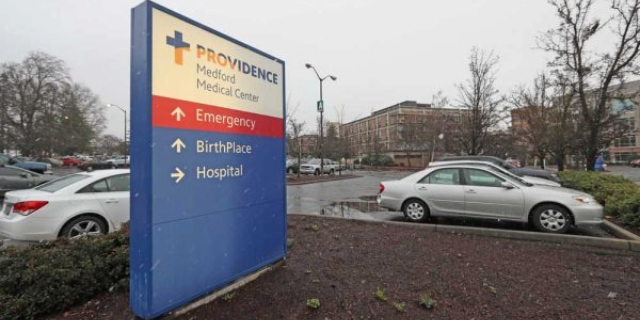UPDATE: Tsunami advisory remains in effect for Oregon Coast, inundation not expected
Published 7:32 pm Tuesday, July 29, 2025

- A tsunami evacuation sign near Haystack Rock points beachgoers uphill.
A tsunami sent waves into Russia, Japan, Hawaii and the West Coast of the United States after an 8.8 magnitude earthquake struck off the coast of the Russian Far East early Wednesday.
It was one of the biggest temblor’s ever recorded. Several people were injured, but none seriously, and no major damage has been reported so far.
The danger already appeared to be lessening in some places, with authorities in Hawaii and parts of Japan and Russia downgrading their warnings.
Trending
The quake placed the Oregon Coast under a tsunami advisory Tuesday night. The advisory from the National Weather Service included coastal areas all along the West Coast. It warned, “A tsunami capable of producing strong currents that may be hazardous to swimmers, boats, and coastal structures is expected. Widespread inundation is NOT expected.”
The National Weather Service recommended people in coastal areas move off the beach and out of harbors and marinas. Waves could hit the Oregon Coast starting around 11:40 p.m, according to the advisory. The advisory remained in place as of Wednesday morning.
Here’s the latest:
Explosions and lava flows on Russian volcano
Lava has begun to flow from the largest active volcano in the northern hemisphere Wednesday following the earthquake off Russia’s far eastern coast.
The Klyuchevskaya Sopka — which last erupted in 2023 — stands at 4,750 meters (15,584 feet) in the east of Russia’s Kamchatka region.
Observers heard explosions and saw streams of lava on the volcano’s western slopes, the Kamchatka branch of the Russian Academy of Sciences’ geophysical service said.
Trending
Scientists have anticipated an eruption, with the volcano’s crater filling with lava for several weeks and the mountain spitting out plumes of ash.
Sometimes described as the “land of fire and ice,” Kamchatka is one of the most active volcanic regions in the world. It has about 300 volcanoes, of which 29 are active, according to NASA Earth Observatory.
California city urges people to stay away from beaches
Officials warned people to stay away from beaches and waterways in Crescent City, California, which has observed dozens of tsunamis since the 1930s, including one that killed 11 people and destroyed hundreds of buildings in the city in 1964.
The warning came after a 8.8 magnitude earthquake struck off Russia’s Far East coast on Wednesday. The U.S. National Weather Service’s Eureka office reported tsunami waves with a maximum height of 3.6 feet (1.1 meters) in Crescent City — enough to create minor coastal flooding and inundation.
The 1964 event, considered the worst tsunami disaster recorded in the United States, began with a 9.2 magnitude earthquake in Alaska, according to the Crescent City website. Three smaller waves caused little damage, but then a big wave — nearly 21 feet (more than 6 meters) — devastated 29 city blocks and killed 11.
The city’s downtown was mostly rebuilt and today a walking tour highlights high-water marks posted on surviving buildings, objects pushed by waves and memorials to those who died.
Japan downgrades last tsunami alert
Japan has downgraded its last remaining tsunami alert, which was in the country’s north.
Tsunami advisories remain in place for its Pacific coast following the 8.8 magnitude earthquake that struck off Russia’s Far East on Wednesday.
Russian authorities cancel tsunami warnings for 2 regions
Russian authorities on the Kamchatka Peninsula and Kuril Islands have canceled their tsunami warnings but say the risk of aftershocks and waves remains.
The regional branch of Russia’s Emergency Ministry on Kamchatka warned that scientists expect aftershocks at magnitudes of up to 7.5. It said that more tsunamis are possible in the Avacha Bay where the regional capital of Petropavlovsk-Kamchatsky is located.
Tsunami-driven tides build in northern California
Tsunami activity continued to build in northern California as high tide approached Wednesday morning with maximum confirmed heights along the coast of 3.6 feet (1.1 meters) in Crescent City, 3.0 feet (.9 meters) in Arena Cove and 1.2 feet (.4 meters) in Humboldt Bay, according to the National Weather Service office in Eureka.
The measurements in Crescent City and Arena Cove were high enough to create minor coastal flooding and inundation, the weather service said on social media, adding that tsunami activity will persist and people should avoid beaches and harbors.
Crescent City officials warned on social media that higher surges could arrive around high tide and could affect lower lying areas. They asked people to stay away from beaches and waterways.
Hawaii and parts of Japan downgrade tsunami warnings
Hawaii and parts of Japan downgraded tsunami warnings, with Hawaii lifting evacuation orders across the state while leaving a tsunami advisory in place.
Officials in Hawaii said residents who had evacuated could return to their homes.
Maj. Gen. Stephen Logan, the Adjutant General of the State of Hawaii Department of Defense, said an advisory means there is the potential for strong currents and dangerous waves, as well as flooding on beaches or in harbors.
8.8-magnitude quake was among the strongest this century
Wednesday’s 8.8-magnitude quake was among the four strongest earthquakes this century, and among the eight strongest since 1900, according to the USGS.
The earthquake occurred along the Pacific Ring of Fire, the ring of seismic faults around the Pacific Ocean where most of the world’s earthquakes occur.
The 2011 Japan quake and the 2004 earthquake off Indonesia were 9.1 magnitude, and a 2010 earthquake in Chile also was recorded at 8.8 magnitude.
Water recedes at Hawaii beaches as tsunami reaches Oahu
Hawaii Gov. Josh Green said officials observed water receding by 20 to 30 feet (6 to 9 meters) at Haleiwa Harbor on Oahu, the state’s most populous island, an indication tsunami waves will arrive. The waves pulling out left boats to lay on dry rock and sand. “That gave us pause,” Green said.
So far no damage has been recorded, but it will take two to three hours of observation before authorities will be able to determine whether the event has passed, Green said.
Definition of a tsunami
Tsunamis are waves triggered by earthquakes, underwater volcanic eruptions and submarine landslides. After an underwater earthquake, the seafloor rises and drops, which lifts water up and down. The energy from this pushes sea water that transfers to waves.
Many people think of tsunamis as one wave. But they are typically multiple waves that rush ashore like a fast-rising tide.
US forecasters warn people against going to the coast
“This will NOT be a single wave. Do NOT try to go to the coast to take photos,” the National Weather Service San Francisco Bay Area office posted on X.
The agency warned people could put themselves and any rescue teams that may be out at risk.
The Oregon Coast was under a tsunami advisory Tuesday night after one of the world’s strongest earthquakes struck Russia’s Far East, an 8.8-magnitude temblor that set off a tsunami in the northern Pacific region and prompted warnings for Alaska, Hawaii and south toward New Zealand.
The advisory from the National Weather Service included coastal areas all along the West Coast. It warned, “A tsunami
capable of producing strong currents that may be hazardous to swimmers, boats, and coastal structures is expected. Widespread inundation is NOT expected.”
The National Weather Service recommended people in coastal areas move off the beach and out of harbors and marinas. Waves could hit the Oregon Coast starting around 11:40 p.m, according to the advisory.
Tsunami warning sirens blared Tuesday in Honolulu and people moved to higher ground.
The Japan Meteorological Agency said a first tsunami wave of about 30 centimeters (about 1 foot) reached Nemuro on the eastern coast of Hokkaido.
Damage and evacuations were reported in the Russian regions nearest the quake’s epicenter on the Kamchatka Peninsula.
The first tsunami wave hit the coastal area of Severo-Kurilsk, the main settlement on Russia’s Kuril Islands in the Pacific, according to the local governor Valery Limarenko. He said residents were safe and staying on high ground until the threat of a repeat wave was gone.
The Pacific Tsunami Warning Center said waves of 1 to 3 meters (yards) above tide level were possible along some coastal areas of Hawaii, Chile, Japan and the Solomon Islands. Waves of more than 3 meters (yards) were possible along some coastal areas of Russia and Ecuador.
The Pacific Tsunami Warning Center said a tsunami had been generated by the quake that could cause damage along the coastlines of all the Hawaiian islands.
“Urgent action should be taken to protect lives and property,” the warning stated. The first waves were expected around 7 p.m. Tuesday local time.
The quake at 8:25 a.m. Japan time had a preliminary magnitude of 8.0, Japan and U.S. seismologists said. The U.S. Geological Survey later updated its measurement to 8.8 magnitude and the USGS said the quake occurred at a depth of 20.7 kilometers (13 miles).
The quake was about 119 kilometers (74 miles) away from the Russian city of Petropavlovsk-Kamchatsky, which has a population of 180,000, on the Kamchatka Peninsula.
Russia’s Tass news agency said people in Petropavlovsk-Kamchatsky ran out into the street without shoes or outerwear. Cabinets toppled inside homes, mirrors were broken, cars swayed in the street and balconies on buildings shook noticeably. Tass also reported power outages and mobile phone service failures.
Tass also quoted a local Russian official as saying residents on Sakhalin Island were being evacuated and emergency services were working at full capacity.
The National Tsunami Warning Center, based in Alaska, issued a tsunami warning for parts of the Alaska Aleutian Islands, and a watch for portions of the West Coast, including California, Oregon, and Washington, and Hawaii.
The advisory also includes a vast swath of Alaska’s coast line, including parts of the panhandle.
The earthquake appeared to be the strongest anywhere in the world since the March 2011 earthquake off northeast Japan that measured 9.0 magnitude and caused a massive tsunami that set off meltdowns at a Fukushima nuclear power plant. Only a few stronger earthquakes have ever been measured around the world.
New Zealand authorities issued warnings of “strong and unusual currents and unpredictable surges” along coastlines throughout the country. The alert by the government emergency management agency said people should move out of the water, off beaches and shore areas, and away from harbors, marinas, rivers and estuaries.
New Zealand is in the South Pacific and about 6,000 miles from the epicenter.
Earlier in July, five powerful quakes — the largest with a magnitude of 7.4 — struck in the sea near Kamchatka. The largest quake was at a depth of 20 kilometers and was 144 kilometers (89 miles) east of the city of Petropavlovsk-Kamchatsky.
On Nov. 4, 1952, a magnitude 9.0 quake in Kamchatka caused damage but no reported deaths despite setting off 9.1-meter (30-foot) waves in Hawaii.








